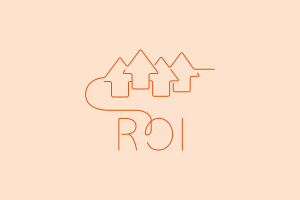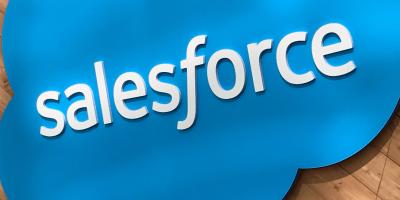How an Open Platform Increases Marketing ROI: Connecting Acquia CDP and Salesforce Marketing Cloud

Three years after the pandemic radically reshaped the global economy and forced many businesses to quickly pivot, perpetual digital transformation is now a firmly cemented part of our daily business lives. As the martech space continues to expand and mature, we see businesses investing more in technologies like marketing automation, artificial intelligence (AI), and data management. In 2021, former Acquia CMO Lynne Capozzi predicted, “Marketers’ need for consistent data will be a major tipping point for consolidation among many of the vendors in the field” — that still holds true today.
Consolidation challenges for marketing and IT teams
CMOs and marketing leaders have so many tools at their disposal, but without a centralized way to manage them, making everything in your digital ecosystem work together to achieve a single source of truth is troublesome. For example, if your business is already using the popular platform Salesforce Marketing Cloud (SFMC) to manage your customer lifecycle, it can be extremely challenging to integrate it with other legacy platforms and analytics tools without adding a ton of IT burden.
Most of the time, these integration efforts end up with a complex and disjointed tech bundle of multiple systems that your IT team must constantly maintain. Each system from your email service provider (ESP), data management platform (DMP), point of sale (POS) platform, etc. is siloed, making it nearly impossible to create a utopian, one-to-one customer journey. The key to a truly unified customer experience? An open customer data platform (CDP).
An open, flexible CDP for the win
The hype around CDPs today is stronger than ever because they promise the elusive 360º customer view that allows businesses to turn customer relationships into revenue. However, a CDP can only leverage all your data if it can seamlessly integrate and communicate with other tools you’re already using. Acquia CDP is open, flexible, and configurable to any system, including SFMC, making it easier to integrate with other tools and to bring your data together. The freedom to take a best-of-breed approach to your martech stack sets Acquia CDP apart from other CDP-like solutions, such as Adobe’s or Oracle’s CDP offering, that only integrate with products in their own portfolios.
Currently, over 80% of Acquia CDP clients use the SFMC as their ESP, and they’ve been universally successful with integrating their customer data and insights from Acquia CDP into Salesforce Journey Builder. And, by connecting your journey-building tool with a CDP, your marketing teams won’t waste time pulling multiple analytics reports from each system. Our customer data platform provides cohort analysis so marketers can instantly access cohort insights. They can also track and compare customer segments over time to understand the total business impact.
A configurable approach: Acquia CDP and Salesforce Journey Builder
Our configurable approach to customer segmentation and machine learning means that brands can leverage essential customer intelligence to inform all their campaign efforts, improving email targeting and boosting ROI. The CDP’s persistent database makes data easily accessible to any SFMC features you need to leverage in your campaigns from simple send, automated campaigns, or more behavior-based campaigns via Salesforce Journey Builder. More so, Acquia CDP builds on the capabilities of what Journey Builder offers alone. Our CDP provides cross-channel orchestration for customer data from both online and offline sources. Beyond a single view of the customer from multiple sources, Acquia CDP offers out-of-the-box machine learning models to generate insights such as likelihood to buy, product cluster, and channel preference to further enhance the precision of marketing campaigns in SFMC.
For example, a retailer can gather data from promotional events and workshops, in-store browsing, or call center records as well as from digital channels across web, social media, and mobile. Acquia’s robust CDP will integrate all of this data into a complete and inclusive customer record. The ability to recognize and connect with customers both on and offline is more critical than ever for brands as customers adapt their preferences and behaviors to explore new channels and meet the needs of a digital-first world.
The difference between Acquia CDP and Salesforce Einstein
Unlike a fully unified customer data platform, Salesforce’s Einstein AI Engine only offers a fragment of insight scattered across the larger SFMC ecosystem. Einstein Recommendation uses website traffic via a Collect Tracking Code to understand your customer behavior. Afterwards, you map your product catalog to SFMC. Then, the SFMC AI engine computes the product affinity for each persona.
Einstein functions more like a data broker and requires processes like marketing automation, analytics, and machine learning to occur in different Salesforce systems. Integrating these systems together is difficult and costly without an open and centralized platform.
Acquia CDP, on the other hand, uses an AI engine that can calculate more than one billion predictions per day and identify customer preferences across multiple data sources. Our machine learning framework spans the foundation of the entire Acquia Digital Experience Platform (DXP), so it can be easily integrated with other Acquia products and external systems. Acquia CDP leverages both pre-built and configurable models, so brands can customize their machine learning approach to meet the needs of their customers.
Have your cake and eat it too: Combining Acquia CDP with Salesforce Einstein Recommendations
Like Salesforce Journey Builder and Acquia CDP, it’s possible to have it all by combining our CDP and Einstein Recommendations. Here’s how it works when they’re integrated:
- Acquia CDP identifies which categories website abandoners were browsing and defines these audience members into distinct segments.
- Salesforce Journey Builder creates the right series of experiences for each segment.
- Salesforce Einstein powers recommendations for a personalized email campaign.
Let’s take a look at an example where a client successfully combined both Acquia CDP and Einstein Recommendations:
A large retailer wanted to execute a lifecycle project to reactivate dormant customers via a discount offer. They optimized the campaign with Acquia CDP to identify and personalize the discount offering while reducing their overall send frequency.
The process
Step 1: To re-target consumers, customer segments are built using data gathered by Acquia CDP web tags to identify the product categories shoppers most frequently browse before abandoning the site.
Step 2: Then, the segmented audiences are pushed to SFMC, and AMPscript creates a dynamic content block to display the matching product information to each segment.
Step 3: Finally, Salesforce Einstein powers recommendations for personalized, relevant content for emails to recipients who abandon virtual shopping carts — the audience segments identified in the lifecycle campaign.
The result
The Einstein Recommendation is created by reconciling a customer's identity to one of the primary identifiers chosen by the client team such as Subscriberkey, SubscriberID, or a custom field name from the SFMC Master list. The CDP then leverages the final identification to seamlessly sync the data.
Using SFMC and Acquia CDP to maximize ROI
Rather than adding another siloed tool to your marketing stack or investing enormous amounts of IT bandwidth and external resources trying to force-fit a closed CDP into your workflow, Acquia’s CDP makes integration easy and harmonizes your current systems.
Salesforce Journey Builder complements the CDP data and allows brands to activate their customer data points to inform new decision paths and design more meaningful and relevant customer journeys, while Acquia CDP and Salesforce Einstein extend personalization capabilities and work together to orchestrate more strategic, holistic marketing campaigns. The combination of a centralized customer data platform and journey orchestration effectively allows marketers to focus their efforts on high-value customers and campaigns with the greatest impact on overall business success.
See exactly how we can help you connect Acquia CDP with Salesforce Marketing Cloud and maximize your digital experience efforts. Request, watch, or click through a demo of Acquia CDP today.




